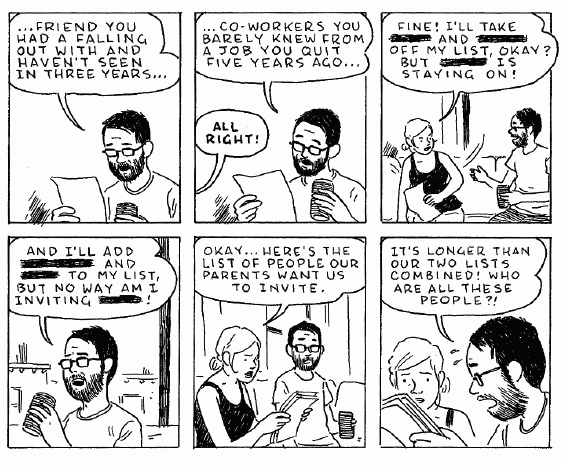To go into detail before Tomine even gets started on a new comic, he does a lot of “pre-work” that involves research, story sketches and mountain of doodles. Mostly it involves a lot of thinking and sketching which will eventually lead up to the creation of a story after all of that is done he sets to get the writing down and organized. From then on it is the magic of the artist that carries all work to it's final product.
But all ideas need a jumping point to start off of so then where does he get his ideas from? drawing back on his youth Tomine actually loved comics many of which as cited as his inspiration. This includes works like Love & Rockets by Jaime and Gilbert Hernandez, Peanuts by Charles Schulz and many others. As for his main style he holds true that the artist responsible for his inspiration there is Jaime Hernandez.

But all ideas need a jumping point to start off of so then where does he get his ideas from? drawing back on his youth Tomine actually loved comics many of which as cited as his inspiration. This includes works like Love & Rockets by Jaime and Gilbert Hernandez, Peanuts by Charles Schulz and many others. As for his main style he holds true that the artist responsible for his inspiration there is Jaime Hernandez.
Other then than Tomine has been known to draw from his own life, why not draw what you already know? that is no more clear than in Scenes which is a direct comment on his life as he tries to plan his wedding with his soon to be wife Sarah Brennan.









